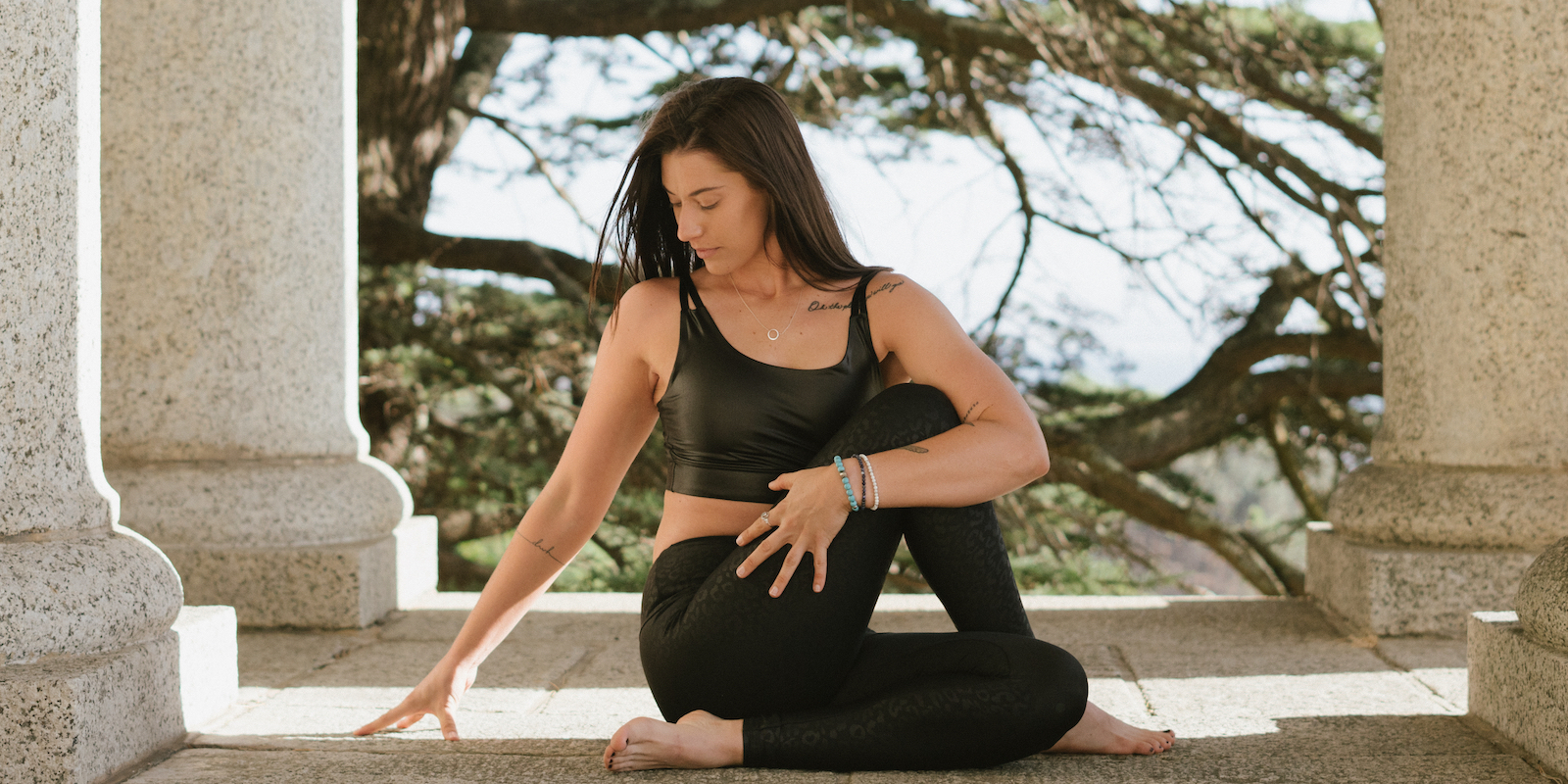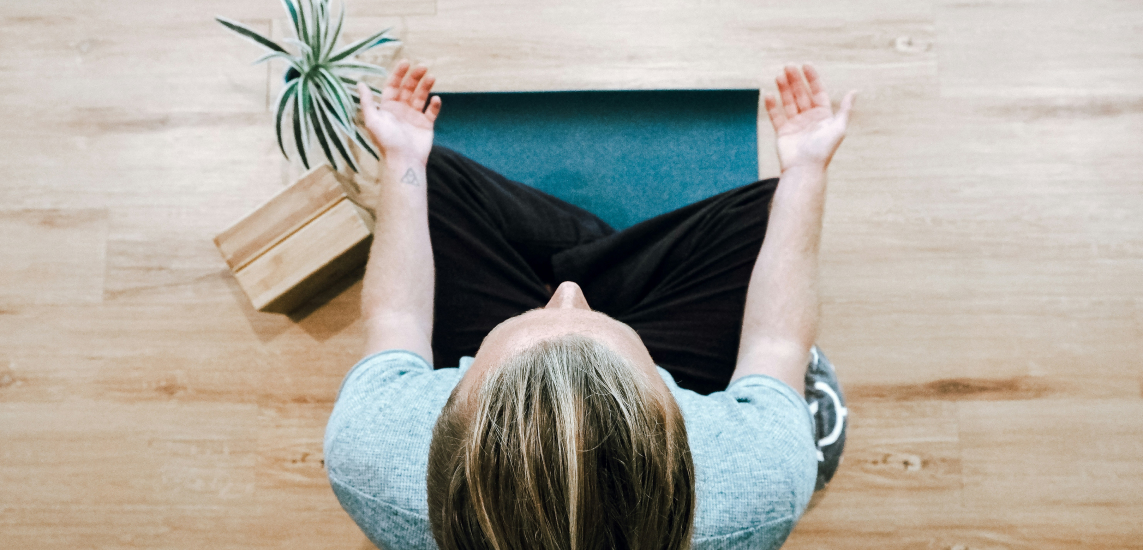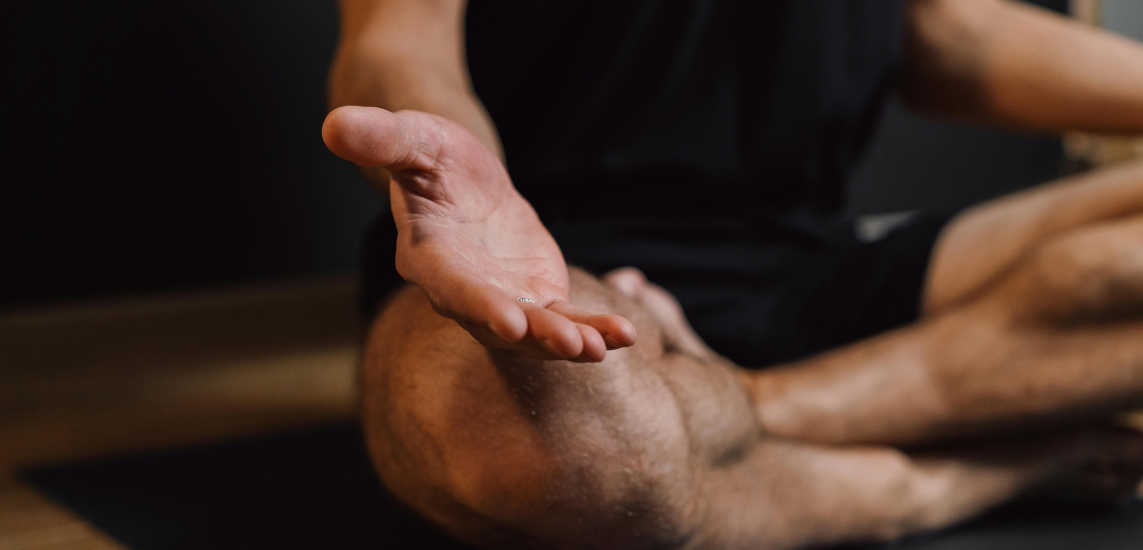At first glance, yoga and meditation might seem like two separate practices, but when woven together, they create many benefits for both your body and mind. While each practice stands strong on its own, the sequence in which you do them can significantly enhance your experience. Let’s dive into why starting with yoga can profoundly impact your journey into meditation.
Key takeaways
- Yoga primes your body, not just by increasing strength but also by opening up spaces within you that you might not even realize were tight.
- Through a series of movements, yoga helps in clearing the pranic energy pathways.
- Incorporating gentle and accessible yoga asanas before meditating can significantly enhance your overall experience.
Explore the five principles for preparing to meditate that can transform your approach and deepen your practice.
The connection between yoga and meditation
Yoga and meditation, rooted deeply in Indian culture, are linked both historically and philosophically. Yoga serves as the physical preparation that readies the body and mind for the stillness of meditation.
Engaging in yoga before meditation smooths the transition from physical activity to mental serenity, facilitating a deeper and more focused meditative state.
The eight limbs of yoga
We can see the importance of combining yoga and meditation through the eight limbs of yoga. These limbs detail the major components that help us benefit from yoga in the way we are meant to. Let’s review each limb and it’s major purpose:
- Yama (Ethical Standards): Practice truth, non-violence, non-stealing, continence, and non-covetousness. Following this limb of yoga fosters ethical living and mental clarity, better preparing your mind for meditation.
- Niyama (Self-Discipline and Spiritual Observances): This limb includes cleanliness, contentment, spiritual austerities, study of the sacred scriptures, and surrender to God, which cultivate discipline and focus, essential for meditation.
- Asana (Posture): The physical postures of yoga are designed not only to increase strength and flexibility but also to promote a stable and comfortable meditation posture.
- Pranayama (Breath Control): Pranayama, or breath control, involves specific breathing exercises that help calm the mind and regulate energy through the chakras, serving as essential breathwork before meditation.
- Pratyahara (Withdrawal of Senses): This involves drawing the senses away from external objects to focus inward, crucial for achieving meditative concentration.
- Dharana (Concentration): The practice of concentrating on a single point or idea, which is a direct preparation for meditation.
- Dhyana (Meditation): The practice of continuous flow of cognition toward an object or idea, deepening the meditative experience and enhancing awareness and insight.
- Samadhi (Absorption): The ultimate stage, in which the meditator merges with the object of meditation, representing a state of oneness and enlightenment that is the goal of both yoga and meditation.
In what order should I do yoga and meditation?
Choosing the correct sequence between yoga and meditation can significantly influence your overall practice. It’s recommended to engage in yoga first. This approach leverages yoga’s dynamic and physical nature to prepare the body and mind for the stillness and focus required in meditation. By performing yoga first, you’re effectively setting the stage for a more profound and undisturbed meditation session.
Learn more about the awareness built through asana practice.
The benefits of doing yoga before meditation
Practicing yoga before diving into meditation isn’t just about stretching the limbs — it’s a strategic approach to enhancing your meditation experience. Let’s break down why yoga serves as the perfect precursor to meditation:
Physical benefits of yoga:
- Releases tension: Yoga poses help release built-up tension in the muscles and joints, allowing you to sit more comfortably during meditation.
- Improves flexibility: Regular yoga practice enhances flexibility, which can prevent discomfort that might distract you during meditation.
- Sets a tranquil stage: The physical activity of yoga serves as an excellent pre-workout practice, making it easier to transition your body into a state of relaxation and enter into deep meditation.
Mental benefits of yoga:
- Reduces anxiety: Yoga helps lower stress and anxiety levels, preparing your mind for a quieter meditation session. This is particularly effective as yoga regulates stress hormones and soothes the nervous system.
- Enhances cognitive performance: Engaging in yoga before meditation boosts cognitive functions, such as better concentration and mental clarity, making the meditative practice more fruitful.
- Optimizes meditation experience: Integrating yoga and meditation enhances the quality of your meditation by priming your mental state, allowing for deeper focus and presence.
Why we need to prepare the body for meditation
Preparing the body for meditation is crucial for achieving the full benefits of your practice. Engaging in yoga before meditating addresses physical discomforts, which can be a major distraction, and facilitates a smoother transition to the mental focus required for effective meditation. This preparation not only involves physical loosening but also the stabilization of energy, known as prana, which is essential for achieving a meditative state.
Start your journey to inner peace by preparing your body and mind for meditation.
Best asanas to do before meditating
Preparing for meditation isn’t just about finding a quiet space. It’s also about preparing your body. Certain yoga asanas can significantly enhance your meditation experience by aligning your body and calming your mind. Yoga poses, serving as physical exercises, help release built-up tension in the muscles and joints, especially in the lower back, through various physical postures. Here are some simple and gentle yoga postures, perfect for your practice before settling into meditation:
- Child’s pose (Balasana): This gentle forward fold calms the nervous system and relieves tension in the back, shoulders, and neck while encouraging introspection.
- Cat-cow stretch (Marjaryasana-Bitilasana): This sequence gently loosens the spine, promotes flexibility, and enhances breath awareness, preparing both body and mind for meditation.
- Seated forward bend (Paschimottanasana): This pose helps calm the mind and reduce anxiety, making it easier to transition into a meditative state. It also stretches the spine and hamstrings.
- Legs-up-the-wall pose (Viparita Karani): Ideal for relieving stress and calming the mind. This restorative pose allows gravity to help with circulation and can be particularly soothing before meditation.
These poses are not only accessible but effective, setting a perfect prelude to a deep and meaningful meditation.
How to integrate meditation and yoga seamlessly
Integrating yoga and meditation into a single, fluid practice transforms your routine into a comprehensive spiritual and physical regimen. Here’s how to create a seamless flow:
- Start with gentle asanas: Begin your practice with a yoga flow, such as the sun salutation, which includes dynamic movements and poses that warm up the body, helping to prepare your state of mind for meditation.
- Incorporate meditative pauses: Incorporate short meditative pauses between yoga sequences to focus deeply on the present moment, using specific meditation techniques to enhance the sense of presence and awareness throughout the yoga practice. This could mean sitting quietly, focusing on the breath, or practicing a full meditation for a few minutes. These pauses help deepen the sense of presence and awareness throughout the yoga practice.
- Introduce pranayama: Pranayama, or breath control, plays a crucial role in controlling the energy flow and mental state. Techniques such as Ujjayi or Anulom Vilom steady the breath, calm the mind, and prepare the body for meditation.
- Sequence effectively: Plan your yoga session to peak with more engaging asanas in the middle and wind down towards more calming, meditative postures and practices as you near the end. This natural progression leads smoothly into a meditative state.
By blending these elements, you create a holistic practice that enhances the benefits of both yoga and meditation.
Can I meditate before yoga?
While common practitioners typically suggest doing yoga before meditation, this order isn’t set in stone. There are times and circumstances where meditating before engaging in yoga might better serve your needs.
Meditating before yoga can be particularly beneficial if you’re feeling overwhelmed or excessively stressed. Starting with mindfulness meditation helps calm the mind, enhancing focus and presence during your yoga practice, which contributes positively to your overall health. This approach can also help set a clear intention for your yoga session, allowing you to move through asanas with a sense of purpose and heightened awareness.
The order of yoga and meditation should ultimately support your wellness journey. Here are a few scenarios where you might choose to meditate first:
- To enhance focus: If you find it hard to concentrate at the beginning of your yoga practice, a brief meditation might help you center your thoughts and enhance your focus.
- For deep relaxation: For those particularly tense days, starting with meditation loosens the grip of stress and anxiety, making the physical practice of yoga more effective and enjoyable.
- To set intentions: Beginning with meditation allows for a moment of introspection, where you can reflect on your goals and aspirations for the session ahead.
The choice between starting with yoga or meditation depends on what feels right for you on any given day. Both sequences hold their unique benefits and can be adjusted according to what your body and mind need most.
Enhance your well-being with yoga and meditation
Yoga and meditation together form a powerful duo that can increase your:
- physical flexibility
- mental clarity
- emotional stability
Whether you choose to do yoga before meditation (or vice versa), integrating both practices into your daily routine greatly enriches your journey toward wellness. Each method complements the other, creating a holistic approach that promotes mental health, inner peace, and overall well-being, reflecting the age-old yogic philosophy.
We encourage you to join a yoga class or learn from an experienced yoga teacher, exploring the wide range of courses and guided meditations available. A skilled yoga teacher can guide you through yoga postures and techniques that enhance your meditation practice.
FAQs on yoga and meditation sequencing
Should I meditate before or after exercise?
Whether you meditate before or after exercise can depend on your personal preference and what you aim to achieve. Meditating before exercise can help set an intention and focus your mind, potentially leading to a more mindful and engaged workout. Meditating after exercise, on the other hand, can be a great way to wind down and reap the benefits of a calmer, more relaxed state induced by physical activity.
Should you do yoga and meditation together?
Absolutely! Doing yoga and meditation together enhances the benefits of both practices. Yoga prepares the body for seated meditation, making it easier to sit still and meditate after a session. The physical practice of yoga also helps release tension and prime the mind for deeper meditation.
What are the benefits of meditation before work?
Meditating before work can help you start your day with a sense of calm and clarity. It can reduce stress and anxiety, enhance concentration, and improve your overall mood. This not only makes you more productive but also improves your interactions with colleagues and your ability to handle work-related challenges.
What is Dhyana meditation?
Dhyana, which is often translated as “meditation,” refers to a profound state of concentration in the practice of yoga. It involves uninterrupted concentration and a deep mental connection to the object of meditation. Dhyana is the seventh of the eight limbs of yoga and serves as a bridge to the final limb, Samadhi, or enlightenment.
What are the benefits of yoga meditation?
Yoga meditation combines the physical benefits of yoga with the mental benefits of meditation. It helps reduce stress, improve mental clarity, increase body awareness, and enhance emotional resilience. Over time, practitioners often experience deeper peace, improved health, and increased mindfulness in daily activities.
References
- Froeliger, B., Garland, E. L., & McClernon, F. J. (2012). Yoga Meditation Practitioners Exhibit Greater Gray Matter Volume and Fewer Reported Cognitive Failures: Results of a Preliminary Voxel-Based Morphometric Analysis. Evidence-Based Complementary and Alternative Medicine, 2012, 1–8. https://doi.org/10.1155/2012/821307
- Krishnakumar, D., Hamblin, M. R., & Lakshmanan, S. (2015). Meditation and Yoga can Modulate Brain Mechanisms that affect Behavior and Anxiety-A Modern Scientific Perspective. Ancient Science, 2(1), 13–19. https://doi.org/10.14259/as.v2i1.171
- Chang, D. G., Holt, J. A., Sklar, M., & Groessl, E. J. (2016). Yoga as a treatment for chronic low back pain: A systematic review of the literature. Journal of Orthopedics & Rheumatology, 3(1), 1–8. https://www.ncbi.nlm.nih.gov/pmc/articles/PMC4878447/



-1.jpg)




